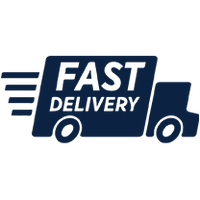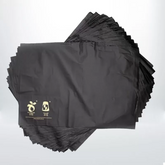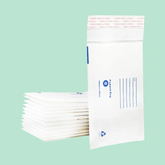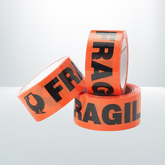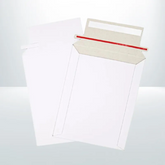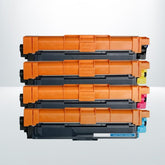The recycling of cardboard boxes reduces waste, saves energy, and promotes environmental sustainability. With increased eCommerce, cardboard has been commonly used, and many households and businesses are left with piles of cardboard boxes. Thankfully, cardboard recycling provides one of the most straightforward ways to reduce waste and conserve resources. In this guide, we will discuss the types of cardboard boxes and how to recycle them properly-and why it matters.
Types of Cardboard Boxes for Recycling
Paper-Based Boxes These are the least expensive and easiest to break, as the names suggest, made from paperboard rather than solid cardboard. These boxes consist of short fibers from an un-sustaining recycling point of view. However, paper fibers are known to be recyclable but not if they are not separated.
Corrugated Cardboard Boxes -Just like the name goes, corrugated cardboard-'folding'-extends the usage of cardboard packaging to move house: simply because the edges of the cardboard available are more thick and denser. These boxes consist of more than one layer; they comprise one layer of the material with waves- the side in between known as "flute", which ensures cushioning of the items while being moved. Corrugated cardboard is also easy to recycle, thus excellent for big recycling endeavors.
Why Recycle Cardboard Boxes?
-
There are many reasons cardboard box recycling should be considered for economics and Mother Nature. The recycling of these materials is a practice that promotes conservation and reduction of wastes, energy consumption, and consumption of materials.
-
Energy Saving The energy consumption in recycling cardboard is 75 percent less as compared with that in producing an equivalent amount of cardboard from virgin materials. For instance, for every ton of recycled cardboard, 46 gallons of oil are saved. This is why cardboard recycling is an environmentally sound practice and energy conserving.
-
Resource-saving Cardboards come from trees and recycling of these cardboards salvages the trees. For 1 ton of cardboard, production consumes 3 tons of trees; recycling of paper thus can lessen the burden. It is thought that for every ton of cardboard recycled, approximately 9 cubic yards of landfill space is saved from uselessness.
-
The Use of Cardboard Boxes Reduces Emissions The recycling of cardboard boxes reduces airborne emissions especially since more energy is required for the production of new materials. In addition, it reduces water and hazardous waste discharges, which could otherwise be detrimental to the environment.
How to Prepare Your Cardboard Boxes for Recycling
Prior preparation of cardboard boxes is essential to ensure their successful recycling.
Step 1: Sort the plastic recyclables from others that are not. Any non-recyclables such as plastic packaging, styrofoam, bubble wrapping, etc., should remain on the cardboard together with tapes and labels to some extent.
Step 2: Dismantle and crush the containers This not only helps in proper space management in your residence, but also reduces labor work at the recycling centers. Dismantle the bulky cardboard boxes into such pieces that fit into the designated recycling containers.
Step 3: Dry the dirty boxes, dispose of clean boxes Contaminated cardboard boxes like wet or dirty ones are very difficult if not impossible to recycle. Thin sheets of water dissolve the fibers that perform well in any recycling process, therefore making one recycling process worthwhile. And, when the boxes get wet and ruthless, you can recycle only the clean parts, the non-greased areas.
The Cardboard Recycling Process
This is what recycling cardboard boxes actually amounts to. Of course, it is also the first step in the process of familiarizing oneself with recycling.
Step 1: Collection and Sorting Collection and sorting: This involves bringing together and segregating the forms. When the containers have been collected from domestic premises or business ones, they will be separated from each other. For corrugated boxes, for example, other paperboard, mixed papermaking processes which may cause optimum recycling effect among the recovered materials will be segregated.
Step 2: Shredding and Pulping Also, the stored cardboard is put inside a shredder and crushed into smaller parts before it is mixed with water to form a slurry. This step will save the conversion of cardboard slurries to its fiber type, which makes new product creation possible.
Step 3: Filtering and Drinking Sorting and then the drinks from fibers separating the contaminants such as glue, ink, and plastic from the fiber molds. This is called filtration, whose purpose is to ensure that the recycled material will remove all the contaminants.
Step 4: Drying and Rolling After that procedure, the pulp is filtered through the press then covered into sheets of cardboard. Finally, these sheets are carried out and utilized further for other products such as new cardboard boxes.
When You Can’t Recycle Cardboard Boxes
There are times when corrugated cardboard, mostly recyclable, is found not to be so.
Wet or Oily Cardboard, like Water Food apple pies, cannot be recycled and is too queer. Such materials adversely affect the fiber quality and so cannot be reused.
Coated or Waxed Cardboard such as a telescopic handle of the salad's packaging unit helps The Same Situation with Burger Cans. These materials are not easily recyclable, gum or PVC coated milk or juice containers for instance. These materials are best thrown in the rubbish bin or beautified in other ways when recycling becomes infeasible.
Reusing Large Cardboard Boxes
In the absence of recycling, reuse is the next best option, as large cardboard boxes are big enough to contain anything-from clothes and moveables to creativity, since they are fashioned into beautiful art works. Here are several cases of boxes that you can transform into simple use:
Storage Solutions: Large cardboard boxes could do with being packed with cluttered items in the garage and up in the loft.
Composting: Cardboards can be perforated in small holes and added to piles as amendments to compost heaps.
Gardening: Cardboard honing can also form a proper ghostwriter as well as cardboard ways for your turf.
Wrap Up
Recycling the box regularly can actually prove to be quite a simple but effective way of saving energy while also reducing the amount of rubbish generated and so saving the earth. Every act of orientation and recycling of cardboard will make you part of the green economy. You can recycle the cardboard, or go a step further and makes some crafts with it. It will be for a good cause. For a complete suite of eco-friendly packaging solutions, select NuPack Packaging and join us in making an impact through your choices that will protect our planet.








